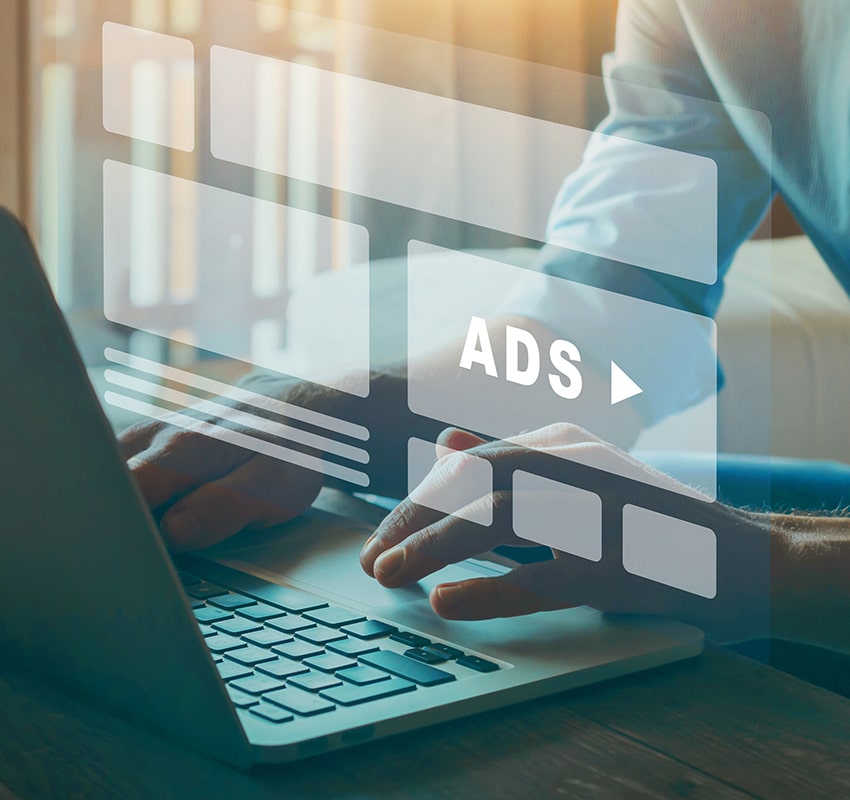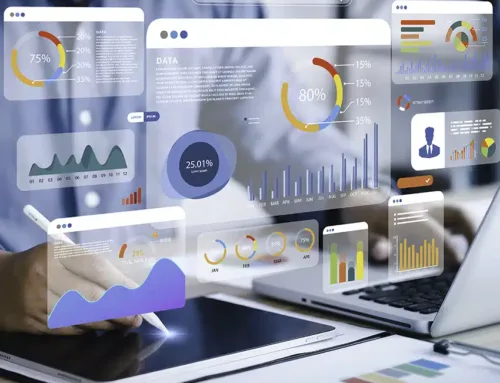Guide to Programmatic Advertising
Programmatic advertising has revolutionized the digital advertising space, offering unprecedented efficiency and precision in ad targeting. This guide delves into the nuances of programmatic advertising, covering everything from its definition and workings to its benefits and platforms.
As we navigate through this comprehensive first guide to programmatic advertising, you’ll gain a deeper understanding of how programmatic advertising can enhance your digital advertising campaigns and drive significant results.
What Does Programmatic Advertising Mean?
Programmatic advertising refers to the automated buying and selling of online advertising space. Unlike traditional media buying methods that involve manual negotiations and direct deals between advertisers and publishers, programmatic online advertising leverages technology to streamline the entire process.
This automation not only saves time but also ensures that ads are delivered to the right audience at the right time. In essence, programmatic advertising utilizes algorithms and data to target specific audiences, making the ad placement process more efficient and effective.
What Is Programmatic Advertising and How Does It Work?
Programmatic advertising automates the process of buying ad space using software and algorithms. It leverages data to identify and target the right audiences purchasing ads, bidding for ad placements in real time through a system called Real-Time Bidding (RTB). Here’s a step-by-step breakdown of programmatic buying and how it works:
- Audience Targeting: Advertisers define the audience to target based on parameters including interests, behavior, and demographics.
- Ad Creation: Advertisers create compelling ad creatives tailored to their audience.
- Bidding: Advertisers use a Demand-Side Platform (DSP) to bid for ad space in real time. The highest bid wins the ad placement.
- Ad Serving: The winning ad is served to the audience on the publisher’s site or app.
- Performance Tracking: Advertisers track the performance of their ads through detailed analytics, allowing for continuous optimization.
What Are Programmatic Advertising Platforms?
Programmatic advertising platforms are technologies that facilitate the automated buying and purchase digital ad inventory and selling of ad space. These various digital advertising platforms include:
- Demand Side Platforms (DSPs): DSPs enable advertisers to purchase ad inventory across various publishers through a single interface. They use data to optimize bids and target specific audiences.
- Supply-Side Platforms (SSPs): SSPs help the publisher manage and sell their ad inventory to multiple ad exchanges and DSPs. They maximize the value of each impression by enabling real-time bidding.
- Ad Exchanges: Ad exchanges act as the marketplace where DSPs and SSPs interact. They facilitate the real-time auction process, ensuring that the highest bidder’s ad is displayed to the target audience.
What Are the Benefits of Programmatic Advertising?
Programmatic, advertising space offers several advantages, making it a preferred choice for purchase ad space for many advertisers:
- Precision Targeting: Utilizes data to target specific demographics, interests, and behaviors, ensuring that ad impressions reach the most relevant audiences.
- Efficiency: Automates the ad buying process, reducing the need for manual negotiations and saving time and resources.
- Real-Time Insights: Provide instant feedback and analytics, allowing for quick optimization of campaigns.
- Scalability: Enables advertisers to reach large audiences across multiple channels and devices, including desktop, mobile, and connected TV.
- Cost-Effectiveness: Optimizes ad spend by ensuring that ads are only shown to relevant audiences, reducing wasted impressions.
How Programmatic Advertising Works
Programmatic advertising works through a sophisticated process that involves several key steps:
- Audience Targeting: Advertisers use data to define their correct audience, including demographic information, interests, behaviors, and online activity.
- Bidding: Through a DSP, advertisers bid for ad space in real time. The DSP uses algorithms to determine the optimal bid for each impression based on the advertiser’s goals and budget.
- Ad Placement: The ad exchange conducts a real-time auction, and the highest bid wins the ad placement. The winning ad is then served to the right audience on the publisher’s site or app.
- Performance Tracking: Advertisers monitor the performance of their ads using detailed analytics provided by the DSP. This includes metrics such as impressions, clicks, conversions, and return on ad spend (ROAS).
- Optimization: Based on the performance data, advertisers make adjustments to their targeting, bidding strategy, and ad creatives to improve the effectiveness of their campaigns.
How to Do Programmatic Advertising
To start with programmatic advertising, follow these steps:
- Define Your Goals: Define what constitutes a successful ad campaign. Goals may be increasing brand awareness, driving traffic to your website, generating leads, or boosting sales.
- Choose the Right Platform: Select a DSP that aligns with your objectives and offers the features you need, such as advanced targeting options, real-time analytics, and integration with various ad exchanges.
- Target Your Audience: Use data to segment and target your ideal audience. This involves creating detailed audience profiles based on demographics, interests, behaviors, and online activity.
- Create Compelling Ads: Develop engaging ad creatives that resonate with your audience. This includes designing eye-catching visuals, writing persuasive copy, and incorporating strong calls-to-action (CTAs).
- Monitor and Optimize: Continuously track your campaign’s performance using the analytics provided by your DSP. Make necessary adjustments to your targeting, bidding strategy, and ad creatives to improve results.
How to Learn Programmatic Advertising
You can learn how to create and run programmatic advertising campaigns through various methods:
- Online Courses: There are many platforms that provide free and paid courses on programmatic advertising. These courses cover fundamentals, advanced strategies, and practical applications.
- Industry Blogs: Industry websites provide valuable insights, industry news, and updates on programmatic advertising trends.
- Workshops and Webinars: Attend industry events, workshops, and webinars to learn from experts and stay updated on the latest developments in programmatic advertising.
- Certification Programs: Consider obtaining certifications from recognized institutions like the Digital Marketing Institute, Google, and the Interactive Advertising Bureau (IAB). These certifications validate your expertise and enhance your credibility in the field.
How Much Does Programmatic Advertising Cost?
The cost of programmatic advertising varies based on several factors, including targeting, ad format, and competition.
Typically, advertisers set a budget for their campaigns, and costs are incurred based on ad impressions made, clicks, or conversions. Here are some common pricing models:
- Cost Per Mille (CPM): Advertisers pay per thousand impressions. This model is commonly used for brand awareness campaigns.
- Cost Per Click (CPC): Advertisers pay each time a user clicks on their ad. This model is suitable for performance-based campaigns focused on driving traffic and conversions.
- Cost Per Acquisition (CPA): Advertisers pay each time a user completes a desired action, such as making a purchase or filling out a form. This model is ideal for campaigns with specific conversion goals.
- Cost Per View (CPV): Advertisers pay each time a user views their video ad. This model is commonly used for video advertising campaigns.
How to Set Up Programmatic Advertising
Setting up a programmatic advertising campaign involves several steps:
- Choosing a DSP: Select a Demand-Side Platform that fits your needs. Consider factors such as ease of use, advanced targeting capabilities, integration with ad exchanges, and cost.
- Defining Your Audience: Use data to create detailed audience segments. This involves analyzing demographic information, interests, behaviors, and online activity to identify your ideal audience.
- Setting a Budget: Determine your campaign budget and bidding strategy. Allocate your budget based on your goals and the pricing model you choose (CPM, CPC, CPA, or CPV).
- Creating Ad Creatives: Develop ads that are visually appealing and relevant to your audience. This includes designing engaging visuals, writing persuasive copy, and incorporating strong calls-to-action (CTAs).
- Launching the Campaign: Activate your campaign and monitor its performance using the analytics provided by your DSP. Track key metrics such as impressions, clicks, conversions, and return on ad spend (ROAS).
- Optimizing the Campaign: Based on the performance data, make necessary adjustments to your targeting, bidding strategy, and ad creatives to improve results. This involves analyzing the data, identifying trends, and implementing changes to enhance the effectiveness of your campaign.
How Does Programmatic Advertising Work?
Programmatic advertising leverages data and algorithms to automate the ad buying process. It works by utilizing DSPs to bid on ad inventory in real time, ensuring that ads are shown to the most relevant audiences.
Here’s a detailed look at the full programmatic advertising cost and buying process:
- Data Collection: Data is collected from various sources, including website analytics, customer databases, and third-party data providers. This data is used to create detailed audience profiles.
- Audience Segmentation: Based on the collected data, audiences are segmented into different groups based on demographics, interests, behaviors, and online activity.
- Bidding: Advertisers use a DSP to bid for ad space in real time. The DSP uses algorithms to determine the optimal bid for each impression based on the advertiser’s goals and budget.
- Ad Serving: The ad exchange conducts a real-time auction, and the highest bid wins the ad placement. The winning ad is then served to the target audience on the publisher’s site or app.
- Performance Tracking: Advertisers monitor the performance of their ads using detailed analytics provided by the DSP. This includes metrics such as impressions, clicks, conversions, and return on ad spend (ROAS).
- Optimization: Based on the performance data, advertisers make adjustments to their targeting, bidding strategy, and ad creatives to improve the effectiveness of their campaigns.
Why Programmatic Advertising Is Important
Programmatic advertising is crucial for modern digital marketing because it offers several significant advantages:
- Increases Efficiency: Automates the ad buying process, saving time and resources by reducing the need for manual negotiations.
- Enhances Targeting: Utilizes data to deliver ads to the most relevant audiences, ensuring that ads are shown to users who are most likely to be interested in the advertised product or service.
- Improves ROI: Provides real-time insights and optimization opportunities, enhancing campaign performance and ensuring a better return on investment.
- Offers Flexibility: Allows for adjustments and refinements throughout the campaign lifecycle, enabling advertisers to respond quickly to changes in performance and market conditions.
- Scalability: Enables advertisers to reach large audiences across various platforms and devices, including desktop, mobile, and connected TV.
Why Use Programmatic Advertising?
Using programmatic advertising offers several advantages that make it a preferred choice for many advertisers:
- Automation: Streamlines the ad buying process, reducing the need for manual negotiations and saving time and resources.
- Precision: Targets specific audiences with high accuracy, ensuring that ads are shown to users who are most likely to be interested in the advertised product or service.
- Scalability: Reaches large audiences across various platforms and devices, including desktop, mobile, and connected TV.
- Real-Time Data: Provides instant feedback and allows for quick optimization, enabling advertisers to make data-driven decisions and improve campaign performance.
- Cost-Effectiveness: Optimizes ad spend by ensuring that digital ads are only shown to relevant audiences, reducing wasted impressions and improving return on investment.
When Did Programmatic Advertising Start?
Programmatic advertising or programmatic buying began gaining traction in the late 2000s. The first real-time bidding (RTB) and programmatic ad buying on exchanges were launched around 2007-2008, marking the beginning of the first programmatic marketing” era.
Since then, programmatic advertising has evolved significantly, with advancements in technology and data analytics driving its growth and adoption.
When to Use Programmatic Advertising
Programmatic advertising is suitable for various scenarios:
- Large-Scale Campaigns: Ideal for reaching broad audiences across multiple channels and devices, including desktop, mobile, and connected TV.
- Targeted Campaigns: Perfect for campaigns that require precise audience targeting based on demographics, interests, behaviors, and online activity.
- Dynamic Campaigns: Suitable for campaigns that need real-time adjustments and optimization, allowing advertisers to respond quickly to changes in performance and market conditions.
- Brand Awareness Campaigns: Effective for building brand awareness and reaching new audiences through high-impact ad formats and placements.
- Performance-Based Campaigns: Ideal for campaigns focused on driving specific actions, such as website visits, leads, or sales, through precise targeting and optimization.
Who Is Programmatic Advertising For?
Programmatic advertising is for businesses and marketers looking to efficiently make digital banner ads to reach their target audiences with precision and scale. It is suitable for:
- Small Businesses: Looking to maximize their ad spend with targeted campaigns that deliver a high return on investment.
- Large Enterprises: Seeking to manage large-scale ad campaigns across multiple platforms and devices, including desktop, mobile, and connected TV.
- Agencies: Managing ad campaigns for various clients with diverse needs, ensuring that each campaign is optimized for success.
- E-commerce Businesses: Looking to drive online sales and conversions through targeted and personalized ad campaigns.
- Media Companies: Monetizing their ad inventory by selling ad space to advertisers through programmatic channels.
Who Uses Programmatic Advertising?
A wide range of entities use of programmatic advertising platform, including:
- Advertisers: Brands looking to promote their products or services and reach their target audiences with precision and scale.
- Publishers: Websites and apps selling ad space to advertisers through programmatic channels, maximizing the value of their ad inventory.
- Ad Agencies: Managing an ad campaign on behalf of clients, ensuring that each campaign is optimized for success and delivers a high return on investment.
- Ad Networks: Connecting advertisers with publishers, facilitating the buying and selling of ad space through programmatic channels.
- E-commerce Platforms: Using a programmatic ad exchange to drive online sales and conversions through targeted and personalized advert campaign.
Get Started With the Best Programmatic Advertising Strategies
Programmatic advertising has transformed the digital advertising landscape, providing unparalleled efficiency and precision in targeting audiences. By using programmatic advertising strategies and leveraging data and automation in programmatic ads, businesses can optimize their ad spend, enhance campaigns’ performance, and achieve better results. As the digital marketing industry continues to evolve, programmatic advertising will remain a vital tool for reaching and engaging audiences effectively.
At Healthy Ads, we specialize in helping businesses navigate the complexities of programmatic advertising. Our expertise and cutting-edge technology ensure that your campaigns are optimized for success.
Whether you’re new to programmatic advertising or looking to enhance your existing efforts, Healthy Ads is here to guide you every step of the way. We provide comprehensive solutions that include audience targeting, programmatic ad creation, media buying, campaign and data management platform, and performance optimization.
Start purchasing ad space today by partnering with Healthy Ads and unlock the full potential of programmatic advertising services to drive your business growth.









